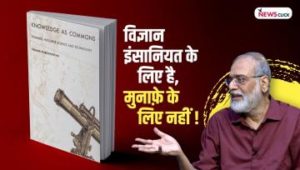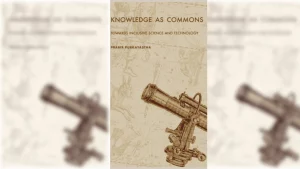“In a room where people maintain a conspiracy of silence,
one word of truth sounds like a pistol shot. . .
You who have wronged a simple man
bursting into laughter at his suffering, Do not feel safe, the poet remembers.”
Czeslaw Milosz.
These lines carry the essence of what is meant by resistance in poetry: a resistance that stands witness, positions itself with the victims, and discovers new forms to articulate its relationship to self, society and language. It says all this in its own subtle ways, like Neruda did – “Come and see the blood in the streets”; or sings with Bob Marley – “Get up, stand up, stand up for your rights”; or stands with Dylan Thomas – “Rage, rage against the dying of the light”. The poet of the bad times echoes Joyce – “Squeeze us, we are olives”, and creates a new poetry for the horror-stricken, the survivors, the abandoned, those left to be butchered. From the fragmented language of the post-Utopian present comes a poetry where the fingerprints of the people show, one that carries the dust of distances and the sweat of labour and the smell of blood and flowers. It is a poetry that has lost its ancient halo of the sublime and strives to keep its optimism of the will crusading against realities that promote the pessimism of the intellect. Like Auden the poet of the present understands that poetry may make nothing happen, but it is a mouth that no one can force shut.
Unlike revolution – which is a historical event and happens in a specific moment with a specific agenda meant to capture power, preceded by months or even years of preparation punctuated by outbursts of popular rage that are often ruthlessly suppressed -, resistance is a condition of opposition that is universal and timeless though expressed within history. It fights all forms of injustices, exploitation, oppression and tyranny unceasingly. Its most recent examples are the many flower-revolutions we saw in West Asia and North Africa, the protest demonstrations in the Wall Street or in Seattle or the many insurrections recently staged in India, by women, queers, tribal people, dalits, workers, students, environmentalists and minorities, against patriarchal violence; the displacement in the name of a development that benefits only the haves; both the natural and cultural destruction of environment; discrimination in the name of religion, caste and race; capitalist exploitation; neo-colonial domination by the Empire in the name of globalisation; moral policing, or the destruction of institutions turned into the handmaidens of a reactionary ideology: moments that would have done Gandhi and Ambedkar proud, examples of what Hardt and Negri , critics of the Empire, would call the “bio-political resistance staged by the multitude” , manifestations of non-solipsistic love which is meant to demonstrate that the real power is with the people and not with the state and the people have every right to wrest power back from a state that turns it against them. Resistance is what continues even when revolutions go sour producing oppressive totalitarian, bureaucratic or theocratic regimes as it has sadly happened with almost every revolution staged so far in our times.
Resistance in art has a complex relationship with this resistance by the people. It tries to discover parallel aesthetic and emotional structures and create new languages adequate to express the new energy. In one sense art is essentially oppositional as it works against hegemonic ideologies and status-quo structures and ever strives to “make it new”. But it becomes an instrument of self-awareness for the community – if not an agent of change- when, under the pressure of history, it begins to reflect the structures of opposition in real society in real time even while not proclaiming its intentions aloud. Commitment works not merely at the level of theme or content, but also at that of form which it is forced to radicalise in order to create structures of resistance in the chosen medium. That is why the idea of the avant-garde keeps coming up in any discussion of resistance in poetry or art. Thus, contemporary Indian poetry by women, dalits, tribal people, queers and revolutionaries is radical not just because it raises new questions and brings up submerged and suppressed themes, but also because it creates new idioms and new structures of imagination that force the world to look at itself critically and contribute to a new aesthetics of form along with a new political ethics. These poets re-enchant the disenchanted world by turning poetry into a symbolic act intended to transform the world. Poetry always tries to say what it cannot say, and its power comes from its willingness to give a voice to what is voiceless and a name to what is nameless. It advances on the blank page, as Nicanor Parra would say. Poetry becomes important not when it reproduces established values, given truths or ready-made slogans. It is an ear that hears voices beyond the understanding of common sociology, an eye that sees beyond the colour spectrum of everyday politics. It is the undeclared mission of poetry today to retrieve the past without being atavistic, and to disentangle the effects of power from representations; to re-establish the connections almost lost between man and nature; to redefine the boundaries between the self and the other; and to re-sensitise human beings to the causes of oppression, suffering, alienation and solitude.
Aesthetics does not cover up ugly truths. It is a conscious attention, concern and value applied to surfaces shapes, arrangements, techniques, movements, dynamics, suspensions, densities, repetitions and their expressive powers. A defense of aesthetics is a defense of imagination, pleasure, sensual and intellectual freedom, curiosity, play (as defined by Kant and Schiller), experimentation, essay, openness. The new art- conceptual art, net art, installations, video art and other new forms- is not necessarily about harmony and wholeness, but can be an described as an awareness of discord, dissonance, or “dissensus” (a term Ranciere uses as the opposite of “consensus”). It opposes the capitalist world view by resisting utilitarian co-option: shapes, cadences, surprises, sounds and spaces in a poem or a work of art cannot be commodified, nor taken as booty. Art opposes all forms of regimentation and invests the quotidian with layers of meaning. The autonomy of art that the avant-garde defends is a refusal to compromise with the practices of power and the aestheticisation of life in the capitalist or communalized world. Avant-garde art is the inscription of the unresolved contradictions between the aesthetic promise and the realities of oppression in the world. It breaks down the obvious order and unsettles traditional patterns in an attempt to redefine the sensible. Art interrogates the hierarchical organization of the community and creates experiences that disrupt the results of domination in everyday life. It contributes to resistance by reconfiguring the realm of appearances and reframing the way in which problems have been posed. It contests the way capacities, voices and roles have been apportioned in the existing order.
Artistic practices redefine what can be seen and said (as defined by the hegemonic forces that constitute and embody the state), and the implicit estimations placed on the members of communities. Art operates upon the aesthetic dimensions of the political as politics itself is a struggle over what can be seen and heard. It denies the rigid identities stamped upon us by the police order and provokes counter-histories that would offer new forms of experience and exchanges between art and life. Art is anathema to oppressors as it always generates new ideas, forms, desires, possibilities, energies and love of existing in the world. That is why any fascist system first turns to artists and tries to control and silence them through propaganda, censorship, threats and abuse of law as we saw recently in the case of M.F. Husain, Perumal Murugan, Mallika Sarabhai, Habib Tanvir, Anand Patwardhan, K S Bhagavan and Deepa Mehta, or even through annihilation as in the case the playwright and scholar M. M. Kalburgi and free thinker-writers like Govind Pansare and Narendra Dabholkar.
Reality has cast aside all disguises today and contemporary society has become a heterogeneous collection of things homogenised by the whip or by propaganda, directed by groups which are distinguishable from one another only by their degree of brutality. In these circumstances, it is important to counter the culture of silence and consent promoted by the mainstream media by developing democratic plurality in cultural practice and following a multi-layered, heterogeneous and dynamic concept of art and culture that recognises our cultural plurality and a multiplicity of identities. We need to develop an aesthetics of resistance like what Peter Weiss had constructed from Dante’s hell-fires he rediscovered in the Nazi concentration camps. Let me quote Walter Benjamin in conclusion: “Even the dead will not be safe from the enemy if he wins and this enemy has not ceased to be victorious”.



